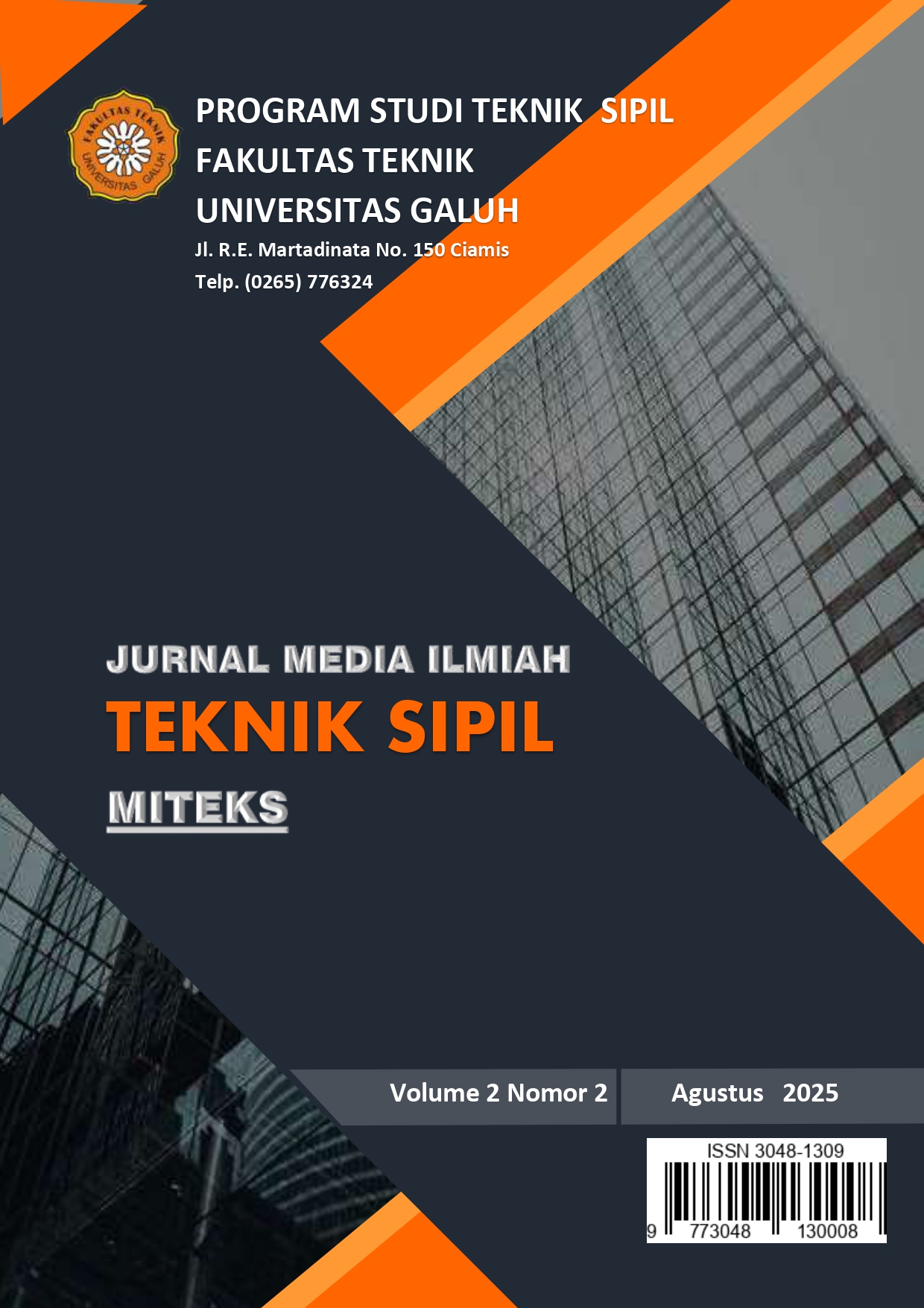ANALISIS KINERJA SIMPANG EMPAT TIDAK BERSINYAL
(Studi Pada Simpang Empat Jalan Raya Sumedang-Cibeureum Kabupaten Tasikmalaya)
DOI:
https://doi.org/10.25157/mediailmiahtekniksipil.v2i2.4319Kata Kunci:
Road Performance, Unsignalized Intersection, and Road Service LevelAbstrak
The intersection area often posed challenges due to the absence of signals, resulting in traffic congestion and long queues along the intersection arms. Unsignalized intersections can become bottleneck points, especially during busy hours.The method employed in this research was a survey method with a quantitative approach, involving the collection of planning data necessary for analysis. The analytical techniques used included road capacity analysis, degree of saturation analysis, delay analysis, queue probability, and level of service analysis.The research findings indicated that the four-way intersection on Jalan Raya Sumedang-Cibeureum in Kabupaten Tasikmalaya experienced a traffic volume of 1273 vehicles, with an estimated intersection capacity of 2900. Although the degree of saturation (DS) was still below the maximum capacity, a DS value of 0.58 suggested potential saturation increase that could impede the smooth operation of the intersection. The geometric delay at the intersection was 6.94 seconds per minute (det/smp), indicating a decrease in the efficiency of vehicle movement that could lead to traffic congestion. The intersection's level of service fell within the "B" category, signifying traffic flow stability, yet limitations on operational speed might be related to traffic volume.













